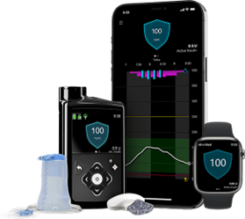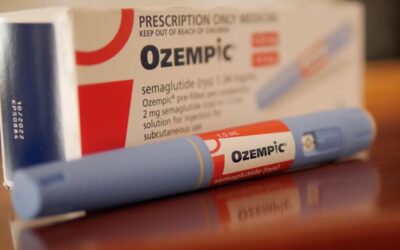
Diabetes Education
The path toward a deeper understanding of diabetes begins here. Southside Diabetes recognizes that the more knowledge you have, the more successful we will be at managing your diabetes. Our contemporary approach to management includes education and awareness.

Frequently Asked Questions
How is diabetes diagnosed?
What are the signs and symptoms of diabetes?
What is hemoglobin A1c (HgA1c)?
A1c is a 90 day average of your glucose levels. Most diabetics should have an A1c between 6-7%, although this varies for each person. A1c does not tell us specifics about your glucose control, such as when your levels are high or low. This is why we ask you to bring your blood sugar meter or logs to each visit. This is also why continuous glucose monitor (CGM) or sensor data is valuable, so we can identify glucose patterns that may result in changes to your treatment plan. Reference the
Hemoglobin A1C Conversion Chart
| A1C | Average BG |
| 6.0% | 126 |
| 6.5% | 140 |
| 7.0% | 154 |
| 7.5% | 169 |
| 8.0% | 183 |
| 8.5% | 197 |
| 9.0% | 212 |
| 9.5% | 226 |
| 10.0% | 240 |
| 10.5% | 255 |
| 11.0% | 269 |
| 11.5% | 283 |
| 12.0% | 298 |
What are my blood glucose and A1c targets?
What is hypoglycemia?
What is hyperglycemia?
What causes high blood glucose?
This can be related to any number of things. As a type 1 diabetic, high blood sugar can be caused by diet or a lack of exogenous (or external) insulin. As a type 2 diabetic, it can be diet or lack of insulin like a type 1, but also because of insulin resistance. Other things like steroids, infection, or stress can cause high blood sugars. It’s important to call your healthcare provider to discuss high blood sugars so we can best diagnose and treat the issue.
What is the difference between T1 and T2 diabetes?
Type 1 diabetes is an autoimmune condition you’re born with. However, you can be diagnosed with type 1 diabetes at any stage in life. Blood tests ordered by the nurse practitioner will confirm this. Type 2 diabetes can be diagnosed in children, teens, or adults. The causes of Type 2 diabetes are a combination of environmental and genetic factors. Some things you can’t outgrow, such as gender, age, and ethnicity (genetics). Environmental factors include diet, weight, and exercise. Talk to your nurse practitioner to see how best our team can support you.
Will I need medication or insulin to control my diabetes?
Why are there different kinds of insulin?
There are four types of insulin: long-acting, intermediate-acting, short-acting, and rapid-acting. Each type of insulin works differently than another. It is not uncommon to pair two different kinds of insulin together to manage your diabetes. See below
| Type of Insulin | Description | Medications |
| Long-acting |
Taken once daily (sometimes two) Peaks (or max effect) 4-6 hours after injection Lasts 24-32 hours |
Levemir®, Lantus®, Basaglar®, Semglee®, Tresiba®, Toujeo® |
| Intermediate-acting |
Usually taken twice daily Peaks 2-3 hours after injection Lasts 8-12 hours |
Novolin® NPH, Humulin® NPH |
| Short-acting |
Taken before meals and as needed for high glucose Peaks 2-3 hours after injection Lasts 4-5 hours |
Humulin® Regular, Novolin® Regular, Humulin® Regular U-500 |
| Rapid-acting |
Taken before meals and as needed for high glucose Peaks 1.5-2 hours after injection Lasts 3-4 hours |
Humalog® (lispro), Novolog® (aspart), Fiasp®, Lyumjev®, Apidra® |
| Mix (Combination of short and intermediate, or rapid and intermediate) |
Taken twice daily: before breakfast and before dinner Two peaks: 1.5-3 hours then 4-8 hours after injection Lasts 8-12 hours |
Humulin® 75/25, Novolin® 70/30, Humalog® 75/25, Novolog® 70/30 |
Does taking insulin mean I’m a “bad” diabetic?
Does weight loss surgery reverse diabetes?
Do I need glucagon and ketone strips?
If you use insulin (including injections and pumps), you should have glucagon and ketone strips on hand at all times. If your blood sugar drops too low that you cannot eat or drink anything, or if you pass out, glucagon is an emergency medication that can be injected into the fatty tissue in your body to make your blood sugar level rise quickly. Some patients can inject themselves but most people require someone else to inject the glucagon for them. You should have a snack or a meal within 15 minutes of injecting the glucagon to prevent your blood sugar from dropping again.
Ketone strips should be used to test your urine for ketones if your sugar is much higher than usual and not coming down, such as when you’re sick or using medications such as corticosteroids. Urinate into a clean cup, dip the ketone stick into your urine, and wait about 1 minute for the blocks on the strip to turn colors. Compare the colors on the strip to the colors on the bottle label. If you have mild, moderate, or high ketone levels (1-4+), you should go to the emergency room. Elevated ketone levels may indicate the onset of diabetic ketoacidosis (DKA) which is a medical emergency.
What complications are associated with diabetes?
Many people are surprised to learn that diabetes isn’t just “high sugar”. It increases your risk for heart disease, kidney disease (nephropathy), nerve damage (neuropathy), hearing loss, vision problems and even blindness (retinopathy). Diabetes can also affect your skin, feet, and nails. These complications can be prevented or reversed with improved blood glucose control.
What is diabetic ketoacidosis (DKA)?
DKA used to only be associated with type 1 diabetes, but it’s also a possibility for type 2 diabetics – even though it’s rare. The acid in your blood builds up and throws off the rest of your electrolytes like sodium and potassium, which can cause important organs like your heart not to work correctly. This is a medical emergency; you should go to the hospital and plan to stay for a few days. Only intravenous (IV) fluids and correction of your blood sugars with insulin will correct this. You must control your blood sugars to prevent this from happening again. Too many episodes of DKA can cause organ failure and death.
What is prediabetes?
Prediabetes should be called stage I diabetes. Your blood sugars are too high to be normal, but without lifestyle modifications you will surely be a diagnosed type 2 diabetic. Lifestyle includes committed, lifelong modifications you can stick to: healthy diet, regular exercise, and a healthy weight. Prediabetes can be managed with lifestyle alone, but can quickly and easily morph into type 2 diabetes if left unchecked.
Diabetes Resources
Southside Diabetes Blog
Eating Out With Diabetes
By: Dr. Dana Stallings Who doesn’t love eating out?! Whether it’s a special occasion, or simply because we didn’t make it to the grocery store this week, eating out is an activity that few of us can avoid. The CDC estimates that 3 in 5 Americans eat dinner out at...
Diabetic Foot Care
We are honored to have Dr. Rodney Bland, DPM as a guest on the blog to discuss diabetic foot care! "People with diabetes can develop many different foot problems. Even ordinary problems can get worse and lead to serious complications. Foot problems most often happen...
What does “organic” mean?
Often considered “healthy” by virtue of being “organic”, foods and beverages that carry the organic seal must still be consumed in moderation. The notion that you can eat as much as you want because the food is “healthy” and/or “organic” is not true. (The same is true...
MiniMed 780G Insulin Pump System: How’s It Going?
MiniMed 780G Insulin Pump SystemHow’s It Going? The MiniMed™ 780G Insulin Pump System with Guardian 4 continuous glucose monitor (CGM) hit the US airwaves in July 2023 to lots of fanfare. With promises of improved control, reduced finger sticks, and less alerts...
Injectable Meds
Written by Dr. Dana Stallings Our most requested topic yet! Almost everyone has heard about the diabetes medications being used for weight loss. So what’s the deal?? Buckle up – this is a long one. First things first… what are these medications? The drug class is...
ADHD & Diabetes
Have you ever: Not been able to find your blood checker when you need it, despite putting one in many frequented locations like your house, car, desk at work, etc? Opened your last vial of insulin and left the empty box sitting on the counter to remind you to refill...
Back 2 School Stress
Back to school season is upon us and with that comes stress, stress, and more stress. Between back-to-school clothes shopping, ensuring that you have the correct supply list, calming nervous kiddos down, getting everyone back on a schedule, navigating between your own...
Tell me more about Macros!!
This week we are welcoming back Heidi Maynard, RN to top off her Part 1 post last week! Heidi gave us a deep dive into protein, fat, and carbohydrates. Be sure to read Part 1 before reading on! And now without further ado, welcome back Heidi! So why should you track...
What the heck is a Macro?
We are sure you’ve seen the headlines for the next fad diet or magic pill that is going to help you cure your diabetes or magically help you drop weight that can help with your diabetes. But that’s just not how it works, and what your body with diabetes may need is...
Diabetic Neuropathy
What is neuropathy? Peripheral neuropathy is decreased function of the peripheral nerves which results in a multitude of symptoms such as numbness, tingling, pain, creepy crawly sensation, or muscle cramping. Neuropathy can affect both upper or lower extremities....
Contact Us
Office
Southside Diabetes
1337 Armory Drive
Franklin, VA 23851
Hours
Tues - Fri: 8-5pm
Sat, Sun & Mon: Closed
Phone
(757) 659-9903
Fax
(833) 471-5922







